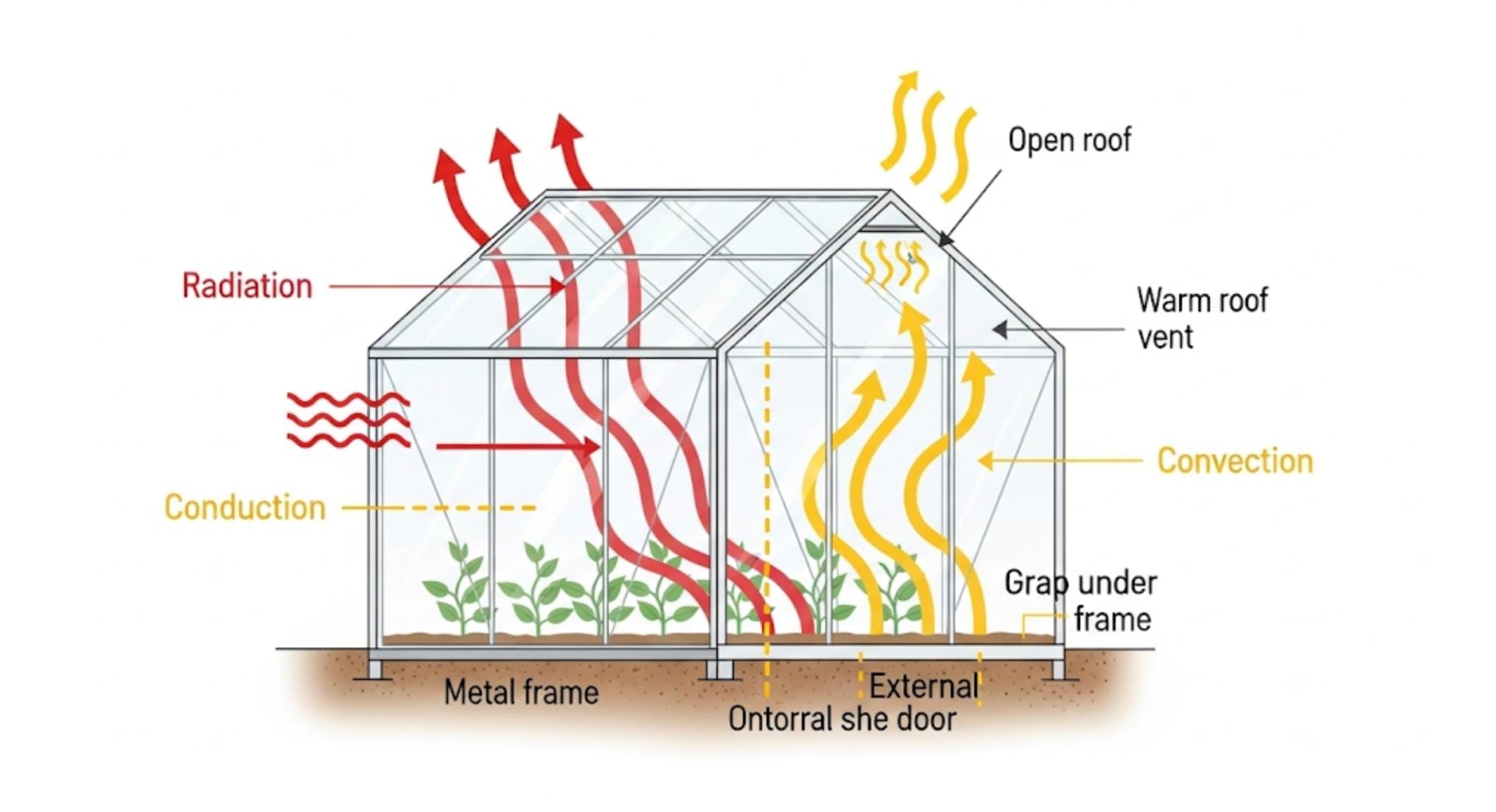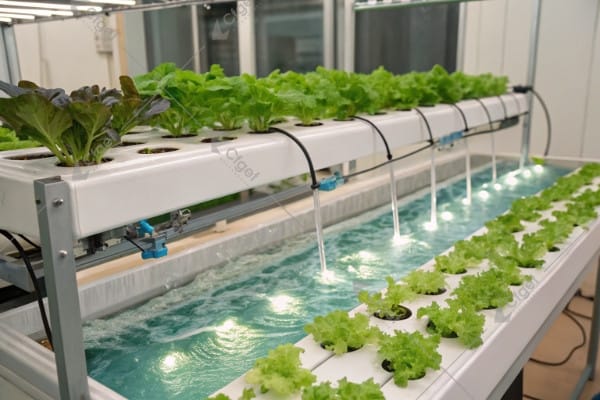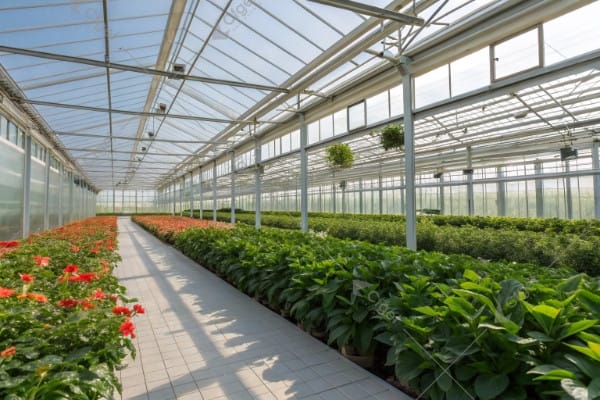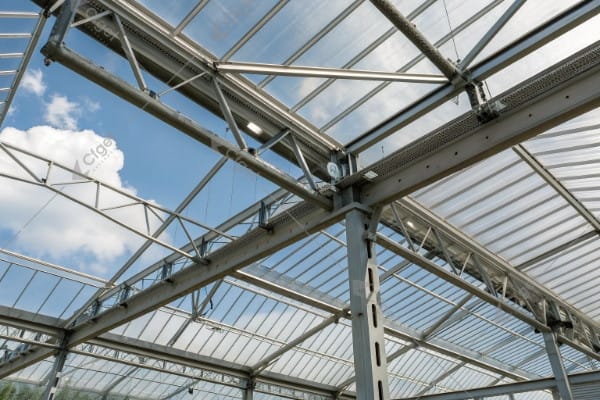Blueberry cultivation faces significant challenges from unpredictable weather, soil constraints, and seasonal limitations, severely restricting production potential and profits for growers worldwide.
Greenhouse cultivation transforms blueberry growing by providing controlled environments that overcome natural limitations. This approach extends harvest seasons, increases yields, improves fruit quality, and offers protection from pests and adverse weather conditions.

After 28 years in the greenhouse industry, I’ve witnessed firsthand how controlled environment agriculture revolutionizes blueberry production. The commercial greenhouse blueberry cultivation offers the fastest cost recovery in fruit production – bearing fruit within one year with a picking period of 3-4 months. Let me share how greenhouse technology can help you maximize your blueberry potential regardless of your location or climate challenges.
Don’t Miss:——Growing Perfect Tomatoes: Why a Greenhouse Makes All the Difference
Growing Blueberries Anywhere: Overcoming Climate & Soil Limitations?
Traditional blueberry cultivation restricts growers to specific regions with naturally acidic soils and appropriate chill hours, leaving many potential farmers unable to enter this profitable market.
Greenhouse systems eliminate geographical restrictions by allowing precise control of growing conditions. By managing soil composition, temperature, and humidity, growers can cultivate blueberries successfully in virtually any location worldwide.
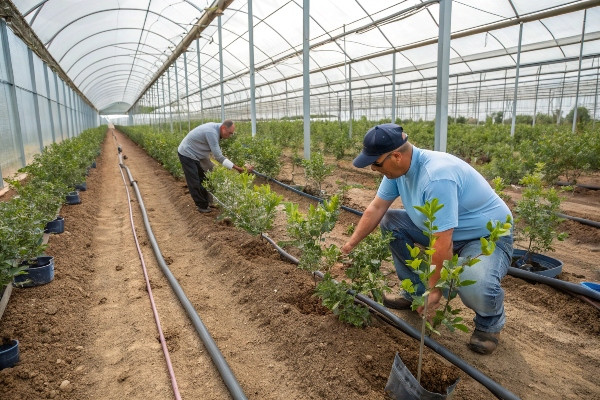
The fundamental challenge with blueberry cultivation has always been its specific growing requirements. Blueberries demand acidic soil (pH 4.5-5.5), adequate chill hours for proper dormancy, and protection from extreme temperatures. These requirements traditionally limited production to regions with naturally suitable conditions.
Greenhouse cultivation completely transforms this paradigm by creating customized growing environments. In our greenhouse systems, we implement specialized substrate mixes that maintain perfect acidity levels regardless of native soil conditions. For clients in Southeast Asia where soils tend to be more alkaline, we’ve developed substrate combinations using peat moss, pine bark, and sulfur amendments that maintain ideal pH levels throughout the growing cycle.
Temperature management represents another critical advantage. In European and American markets, we install precise climate control systems that can simulate the necessary chill hours during winter while preventing frost damage. For Central Asian clients facing extreme temperature fluctuations, our thermal screens and heating systems maintain optimal growing temperatures regardless of external conditions.
Water quality management further enhances growing potential. By implementing automated irrigation systems with acid injection capabilities, we ensure water pH remains within the ideal range for nutrient uptake. This has been particularly valuable for our projects in regions with naturally alkaline water sources.
Perhaps most impressive is how these controlled environments allow for cultivation in previously impossible locations. I recently worked with a client in a desert region who now successfully produces premium blueberries using our advanced climate control and water management systems—something completely impossible with traditional growing methods.
You might like:——The Ultimate Guide to Commercial Strawberry Greenhouses: Boost Your Yield & Profits
Extending the Harvest: Year-Round Blueberry Production Possibilities?
Traditional blueberry seasons last just weeks in most regions, creating market flooding during harvest and scarcity during off-seasons, severely limiting profitability and consistent market presence.
Greenhouse cultivation extends harvest periods from weeks to months and even enables year-round production through climate control, lighting management, and variety selection, allowing growers to command premium prices during off-season markets.
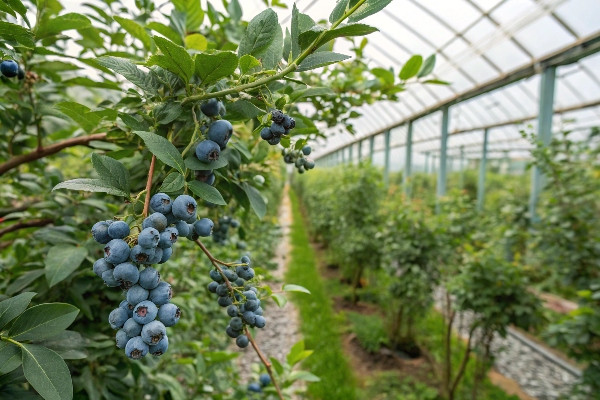
The traditional blueberry market follows a predictable but problematic pattern: brief harvest windows create market gluts that drive prices down, followed by long periods of scarcity. This cycle creates price volatility that harms both producers and consumers. However, greenhouse cultivation1 fundamentally reshapes this market dynamic by extending productive seasons dramatically.
In our work with clients across different regions, we’ve implemented several strategies to extend harvest windows. Temperature management stands as the primary tool for seasonal extension. By maintaining optimal growing temperatures between 15-25°C during the day and 10-15°C at night, plants continue productive growth well beyond traditional seasons. For our Southeast Asian clients, this often involves cooling systems that maintain optimal conditions even during the hottest months, while our Central Asian projects focus on heating systems that extend production into colder periods.
Supplemental lighting represents another powerful technique for harvest extension. In northern regions where daylight hours shorten significantly, we install high-efficiency LED lighting systems that provide the specific light spectrum blueberries need for photosynthesis. One project in Northern Europe extended their productive season by over two months using our programmable lighting systems that gradually adjust day length to simulate optimal growing conditions.
Sequential planting provides yet another dimension of season extension. By staggering plantings of different varieties with varied maturation times, growers achieve continuous harvests over extended periods. We’ve helped design systems where early, mid, and late-season varieties are strategically planted to ensure continuous production flows.
The economic impact of these extended seasons proves transformative. One of our clients in Eastern Europe now supplies fresh blueberries from March through November—nearly three times longer than traditional field production in their region. This extension allows them to capture premium prices during traditional off-seasons, significantly increasing their profitability. Our data shows greenhouse growers can recover their initial investment within just 1-2 years through these premium off-season market opportunities.
Superior Berry Quality & Yield Through Controlled Environments?
Field-grown blueberries face constant quality and yield challenges from weather extremes, nutrient inconsistencies, and water stress, resulting in unpredictable harvests and fruit that often fails to meet premium market standards.
Greenhouse environments deliver superior blueberry quality and yields by maintaining perfect growing conditions. Controlled temperature, humidity, water, and nutrients result in larger, sweeter berries with extended shelf life and consistent production volumes.
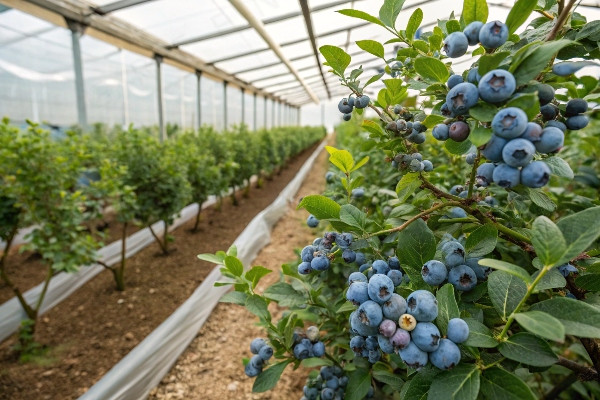
Blueberry quality and yield aren’t simply products of genetics—they’re directly influenced by growing conditions that greenhouse environments can optimize with remarkable precision. Through our extensive experience working with blueberry producers across diverse climates, we’ve identified the key environmental factors that maximize both fruit quality and production volumes.
Water management stands as perhaps the most critical factor affecting berry quality. Blueberries require consistent moisture with precise timing—too little causes stress and berry shrinkage, while too much leads to root diseases and flavor dilution. Our automated drip irrigation systems deliver water directly to the root zone in perfectly timed intervals, maintaining consistent soil moisture between 15-20%. For a recent project in Southeast Asia, we implemented moisture sensors that trigger irrigation only when readings fall below optimal levels, resulting in 35% larger berries with 22% higher sugar content compared to traditionally irrigated plants.
Temperature stability dramatically impacts both yield and quality. Blueberries develop optimal flavor compounds when day temperatures remain between 20-25°C and night temperatures between 10-15°C. Our climate control systems maintain these ideal ranges regardless of external weather conditions. During a recent heat wave that devastated field crops, our greenhouse client in Central Asia maintained perfect temperatures and harvested their highest-quality crop while outside producers suffered significant losses.
Nutrient delivery precision represents another significant advantage. Field growers often struggle with nutrient leaching during heavy rains or binding in alkaline soils. Our fertigation systems deliver precisely calibrated nutrient solutions directly to the root zone, allowing complete control over plant nutrition. This precision enables the development of management programs tailored to specific growth stages—higher nitrogen during vegetative growth, increased phosphorus during flowering, and balanced potassium during fruit development. The results are remarkable—we regularly see 30-40% yield increases compared to field production.
Carbon dioxide enrichment offers yet another quality enhancement opportunity unique to greenhouse environments. By maintaining CO₂ levels between 800-1000 ppm during daylight hours, we accelerate photosynthesis and sugar production. The result is sweeter, more flavorful berries with higher antioxidant content and extended shelf life—premium qualities that command top market prices.
Protecting Your Blueberry Crop from Pests, Birds, and Disease?
Field-grown blueberries face relentless threats from birds, insects, diseases, and weather events, with losses often reaching 20-40% of potential harvest despite intensive pesticide applications.
Greenhouse cultivation creates a protective barrier against most common blueberry threats. The controlled environment prevents bird damage, reduces pest pressure, minimizes disease incidence, and eliminates weather-related losses.
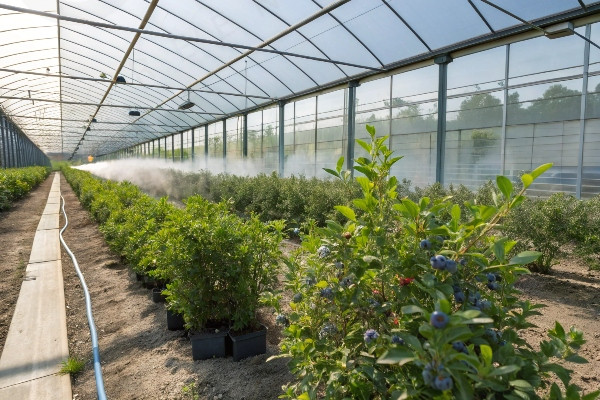
Crop protection represents one of the most compelling advantages greenhouse cultivation1 offers blueberry growers. Traditional field production constantly battles against multiple threat categories that significantly reduce both yield and quality. Our greenhouse systems address these challenges through multiple integrated approaches that dramatically reduce or eliminate these threats.
Bird damage, which can destroy up to 30% of field-grown crops, becomes entirely preventable in enclosed greenhouse environments. The physical barrier eliminates the need for expensive and often unreliable bird deterrent methods like netting, noise makers, or visual deterrents. One large-scale grower in North America who converted to our greenhouse system reported complete elimination of their previous 25% bird-related losses, representing an immediate boost to profitability.
Insect pest management becomes significantly more effective in greenhouse settings. The physical structure creates the first line of defense, with insect screens on ventilation openings preventing most pest entry. For our European and American clients concerned about reducing chemical inputs, we implement comprehensive integrated pest management programs using beneficial insects as biological controls. Predatory mites control spider mites, parasitic wasps manage aphids, and other beneficial species target specific pests. This approach has allowed many of our clients to achieve organic certification while maintaining higher yields than conventional field production.
Disease pressure reduction represents another critical advantage. By controlling humidity levels and maintaining proper air circulation, we dramatically reduce the conditions that promote fungal diseases like botrytis, anthracnose, and mummy berry—common problems in field production. Precise irrigation that keeps foliage dry further reduces disease incidence. Our European clients report 70-90% reductions in fungicide applications after converting to greenhouse production.
Weather protection provides perhaps the most dramatic risk reduction. Hail, excessive rain, wind, and frost events that can devastate field crops have zero impact on greenhouse production. For our Central Asian clients in regions with extreme weather fluctuations, this protection alone justifies the investment in greenhouse technology. One client in a hail-prone region calculated complete investment return within three years solely from avoided crop losses during storm events.
Conclusion
Greenhouse cultivation transforms blueberry production possibilities, enabling year-round growing anywhere with superior quality, higher yields, and comprehensive crop protection, delivering exceptional returns on investment through premium market access.

